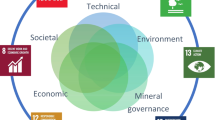Abstract
This paper explores methodological and thematic approaches of an ongoing research project that focuses on how the government of the People’s Republic of China managed water resources after 1949. The project will formulate conclusions about the environmental consequences of different hydraulic engineering projects as China pursued different developmental paradigms. The state pursued Soviet-style central planning for much of the 1950s, Great Leap Forward decentralization and communalization between 1958 and 1961, a blend of state planning and mass mobilization during the 1960s and 1970s, and “market socialism” during the post-Mao era (1978–). The project will be organized around these four eras and it will examine the implications that each of these developmental approaches had on North China’s water resources. Comparative conclusions about the environmental consequences of these four developmental periods will be guided by several fundamental options that faced state and party leaders throughout the post-1949 period: (1) modern hydraulic engineering vs. traditional water conservancy and mass mobilization, (2) central vs. local planning, (3) international technical cooperation vs. self-reliance, and (4) economic development vs. environmental protection. The results of this study will suggest the potential environmental consequences of water policy choices that are made in China. Whether the issue is centralization versus decentralization, reliance on contemporary standards of hydraulic engineering versus traditional mass mobilization, or self-reliance versus international cooperation, an examination of the experience of water management in China since 1949 will point to the environmental consequences of hydraulic engineering choices.
Similar content being viewed by others
Notes
References
Cronon W (1990) Modes of prophecy and production: placing nature in history. J Am Hist 76(4):1122–1131
Greer C (1979) Water management in the Yellow River Basin of China. University of Texas Press, Austin
Gustafsson J (1984) Water resources development in the People’s Republic of China. Royal Institute of Technology, Department of Land Improvement and Drainage, Stockholm
Harvey D (1989) The condition of postmodernity: an enquiry into the origins of cultural change. Blackwell, Cambridge, Ma
Hecht G (1998) The radiance of France: nuclear power and national identity in France after World War II. MIT Press, Cambridge, MA
Heilig GK (1997) China food: can China feed itself. CD-ROM Version 1.1. IIASA, Laxenburg
Hess D (2003) Environmental transformation of the modern order. In: Misa TJ et al (eds) Modernity and technology. MIT Press, Cambridge, MA
Hughes AC, Hughers TP (2000) Planning a technological nation: systems thinking and the politics of national identity. In: Hughes AC, Hughers TP (eds) Systems, experts and computers. MIT, Cambridge, MA
Kendy E, Liu C et al (2003) Policies drain the North China Plain: agricultural policy and groundwater depletion in Luancheng County, 1949–2000. Research Report 71, International Water Management Institute, Colombo
Ling J (1977) Zhongguo dili zhishi [A Basic Geography of China]. Shangwu Yinshu Guan, Hong Kong
Merchant C (1990) Gender and environmental history. J Am Hist 76(4):1117–1121
Pietz D (2002) Engineering the state: the Huai river and reconstruction in nationalist China, 1927–1937. Routledge, New York
Pietz D (2004) Internal boundaries: political-economic transformations and Huai river conservancy and Huai River conservancy in 20th century China. Paper presented at challenges of a trans-boundary world, University of California, Irvine, 28–30 October 2004
Pritchard S (2001) Recreating the Rhône: nature and technology in France since World War II. Ph.D. dissertation, Stanford University
Pritchard S (2004) Reconstructing the Rhône: the cultural politics of nature and nation in contemporary France, 1945–1997. Fr Hist Stud 27(4):765–799
Tan Q (ed) (1982–1987) Zhongguo lishi ditu ji [A collection of Chinese historical maps], 8 vols. Ditu chubanshe, Shanghai
Todd EN (2001) Engineering politics, technological fundamentalism, and German power. In: Hecht G, Allan MT (eds) Technologies of power: essays in honor of Thomas Parke Hughes and Agatha Chipley Hughes. MIT Press, Cambridge, MA
White R (1990) Environmental history, ecology, and meaning. J Am Hist 76(4):1111–1116
Wiberg D (1999) Planning and managing China’s water resources. Options, Summer 1999
World Bank (1997) Clear water, blue skies: China’s environment in the new century. The World Bank, Washington, DC
World Bank (2001) China: air, land, and water: environmental priorities for a new millenium. The World Bank, Washington, DC
Worster D (1985) Rivers of empire: water, aridity, and the growth of the American West. Pantheon Books, New York
Worster D (1990) Transformations of the Earth: toward an agroecological perspective in history. J Am Hist 76(4):1087–1106
Yi S (1998) The world’s most catastrophic dam failures: the August 1975 collapse of the Banqiao and Shimantan dams. In: Dai Q (ed) The river dragon has come. M.E. Sharpe, Armonk, NY
Zhang J (1991) Zhongguo qihou zonglun [Climate of China]. Wanxiang chubanshe, Beijing
Zhang X, Luo X (1999) Nanshui Beidiao [The North to South Water Transfer Project]. Zhongguo shuili shuidian chubanshe, Beijing
Zou Y (1993) Huang Huai Hai pingyua lishi dili [Historical geography of the North China plain]. Anhui jiaoyu, Hefei
Author information
Authors and Affiliations
Corresponding author
Rights and permissions
About this article
Cite this article
Pietz, D. Researching the state and engineering on the North China Plain, 1949–1999. Water Hist 2, 53–60 (2010). https://doi.org/10.1007/s12685-010-0017-0
Received:
Accepted:
Published:
Issue Date:
DOI: https://doi.org/10.1007/s12685-010-0017-0




